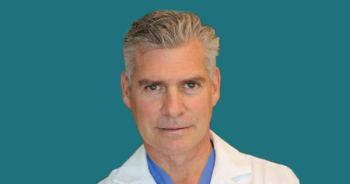
Axi-Cel vs Tisa-Cel in R/R Diffuse Large B-Cell Lymphoma : Guenther Koehne, MD, PhD
The deputy director and chief of stem cell transplantation at Miami Cancer Institute discussed the study of axicabtagene ciloleucel vs tisagenlecleucel in relapsed or refractory diffuse large B-cell lymphoma.
This content originally appeared on our sister site,
OncLive spoke with Guenther Koehne, MD, PhD, deputy director and chief of stem cell transplantation, hematologic oncology and benign hematology, Miami Cancer Institute, to learn more about the study of chimeric antigen receptor (CAR) T-cell agents axicabtagene ciloleucel (axi-cel; Yescarta) vs tisagenlecleucel (tisa-cel; Kymriah) in relapsed or refractory diffuse large B-cell lymphoma (DLBCL).
Koehne discussed new data on CAR T-cell agents. One analysis presented at the
Data from the randomized study showed that axi-cel elicited higher response rates in this population; however, the product was also associated with a higher rate of adverse effects, such as immune effector cell–associated neurotoxicity syndrome and cytokine release syndrome, when compared with tisa-cel, Koehne explains. Furthermore, axi-cel and tisa-cel produced similar overall survival rates, raising questions about how to optimally choose between the 2 therapies, Koehne says.
However, potential strategies may be able to inform which products to use in different patient populations, Koehne adds. For example, tisa-cel could be a strong option for older patients with more comorbidities, and axi-cel might be ideal for younger patients with less aggressive lymphomas, Koehne concludes.
Newsletter
Stay at the forefront of cutting-edge science with CGT—your direct line to expert insights, breakthrough data, and real-time coverage of the latest advancements in cell and gene therapy.












































